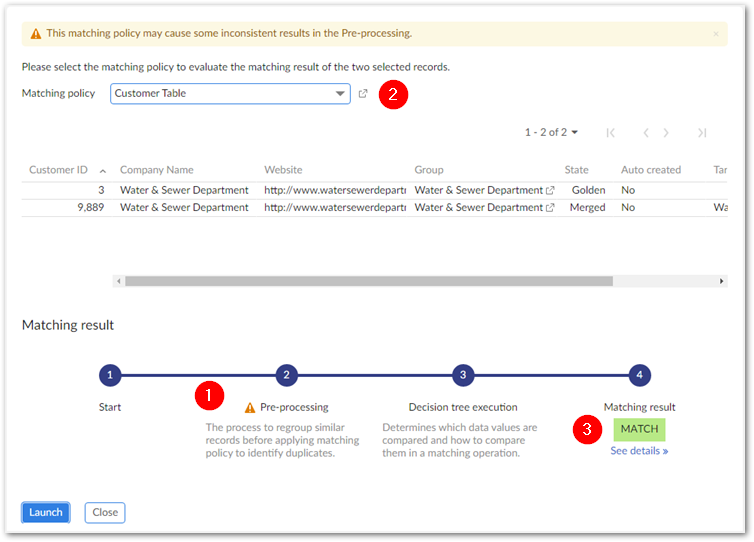Evaluating matching
Overview
The add-on's Evaluate matching service allows you to check the outcome of a matching operation against expected results. This can help you fine tune configuration settings to meet your specific needs.
This service provides the following benefits:
Quick results
Ability to test different policies without exiting the service
Uncover points of matching execution failure
Upon completion, view details that show how the algorithms score and a match/no match was reached
With administrative credentials, directly access configuration settings without leaving the screen
Running the evaluation
To run the service:
Select two records from a table with a configured matching policy.
From the table's Actions menu, select Evaluate matching.
Use the Matching policy menu to select the policy you want to test.
With sufficient permission, you can access the matching configuration and make changes.
Select Launch to run the evaluation.
After running, the results display at the bottom of the screen.
Evaluation results
The following image and list describe results of the matching process:
Note
For more details on the matching process, see Matching processing overview.

As highlighted in the above image, some matching policy configurations might cause inconsistent results in the pre-processing phase of matching. If the process stops at step 2, the records do not pass the pre-processing step and are prevented from evaluation using the matching logic in the decision tree. If you find that records are not making it past pre-processing, you can:
Analyze the fields configured to use matching. Depending on your data, too many irrelevant, or too few important configured fields can cause the system to view records as not similar.
Ensure that the correct weight is used for fields used in matching. Assign higher weights to the more important fields.
Verify that you are using the recommended search strategies for each field's data type.
Change policies or configuration settings on the fly and re-test. Select the
 icon to access policy settings.
icon to access policy settings.Step 4 shows the final decision tree result. (Match/No Match/Suspect) Select details to view a map of the decision tree execution. Double-click a data comparison node to view details about how the records were processed.